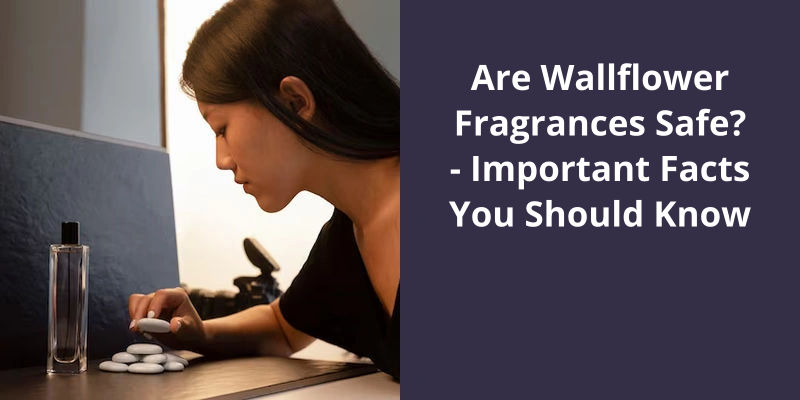Pheromone Oil, a type of essential oil, typically does not have a strong scent of its own. It’s designed to trigger attraction and response rather than a specific smell. However, the exact smell can vary based on added fragrances or your natural body scent since pheromone oils are designed to mix with your body chemistry. Some people might detect a musky or woody scent, while others might not notice any smell at all. Overall, the aim is more about impact on mood and behavior rather than a distinctive fragrance.

What Is Pheromone Oil Made Of?
Pheromone oil is a fascinating concoction that aims to enhance our natural appeal to others. Made up of a unique blend of synthetic animal musk and various stimulating chemicals, pheromone is often considered a mysterious elixir for personal allure. The goal is simple: to make you smell sexier and more appealing to those around you. However, the effectiveness of pheromones in human attraction remains a topic of debate.
While the concept of pheromones is well-known in the animal kingdom, it’s still uncertain whether humans possess the ability to detect these elusive chemical signals. Surprisingly, one particular study has even reported the opposite effect – individuals may find themselves more attracted to others when exposed to pheromone-like products.
The synthetic animal musk mimics the scent secreted by animals to communicate and attract potential mates. Meanwhile, the stimulating chemicals are carefully curated to excite the olfactory receptors in the nose, producing a more alluring fragrance.
Some of the most common notes in pheromone oil fragrances include vanilla, rose, jasmine, and ylang-ylang. These scents are often used to create alluring and captivating pheromone blends that are believed to enhance attractiveness and social interactions. However, it’s important to note that the effectiveness of pheromones in human interactions is still a subject of scientific debate.
What Are Common Pheromone Scents?
When it comes to pheromone oil, the fragrance of the oil plays a crucial role in it’s effectiveness. Common pheromone scents often incorporate notes such as vanilla, rose, jasmine, and ylang-ylang.
Vanilla, with it’s warm and sweet aroma, is a popular choice in many pheromone oils. It exudes a sense of comfort and relaxation, creating a welcoming and comforting atmosphere. The scent of vanilla can be incredibly enticing and appealing, making it an excellent choice for those wanting to enhance their natural allure.
Rose, with it’s classic and timeless floral fragrance, is also widely used in pheromone oil blends. Known for it’s romantic and seductive qualities, rose adds a touch of elegance and sensuality to the overall scent profile. Whether it’s a subtle undertone or the dominant note, the scent of rose is sure to capture attention and leave a lasting impression.
Jasmine, famous for it’s intoxicating and exotic scent, is another common note found in pheromone oil fragrances. It’s floral aroma is often associated with passion and desire, making it a sought-after ingredient in romantic settings.
Ylang-ylang, a tropical flower native to Southeast Asia, is also frequently used in pheromone oil fragrances. It’s fragrance is both sweet and floral, with a hint of spice.
These scents have long been associated with allure and romance, making them fitting choices for those seeking to enhance their natural pheromonal signals.
One of the intriguing aspects of human biology is the ability to detect pheromones, chemical substances that elicit specific behaviors or physiological responses. When it comes to sensing female pheromones, men rely on their sense of smell to detect and respond to these invisible chemical signals. Pheromones are released by women through various bodily secretions like sweat, saliva, and urine, which can subtly influence men’s behavior and attraction towards them. Understanding how this fascinating process works opens a window into the complex world of human communication and attraction.
How Do Men Sense Female Pheromones?
When it comes to the sense of smell, humans rely on olfaction to perceive and interpret various scents. In the case of pheromones, men can sense female pheromones through this chemical communication system. Pheromones, which are naturally occurring substances, are secreted by the body and provide chemical signals that help communicate and influence behavior amongst individuals of the same species.
In humans, pheromones are produced through sweat, saliva, and urine. These scent signals emitted by women can potentially evoke feelings of attraction, desire, or even enhance mood and confidence levels in men.
However, it’s important to note that the ability to detect and respond to pheromones may vary among individuals. Some men may be more sensitive and receptive to these scent signals, while others may not experience the same level of impact. This can be attributed to genetic factors, hormones, personal preferences, or even cultural influences.
The scent emitted by these pheromones is often described as subtle, and although not consciously detected, they can have a subconscious impact on attraction, desire, and mood.
Factors Affecting Pheromone Reception: Explore the Various Factors That Can Affect an Individual’s Ability to Detect and Respond to Pheromones, Such as Age, Health, and Lifestyle.
- Age
- Health
- Lifestyle
Pheromones have long been a topic of intrigue, as they play a crucial role in animal communication and attraction. One particular compound called androstenone has captured the attention of researchers, known for it’s ability to induce various reactions depending on the individual. While some perceive it’s scent as sweet and pleasant, akin to flowers or vanilla, others find it foul, resembling the scent of sweat or urine. Interestingly, there are also individuals who’re unable to detect it’s odor altogether.
What Do My Pheromones Smell Like?
The smell of pheromones is a complex and subjective topic. One of the key compounds that determines the scent of pheromones is androstenone. Androstenone is the first mammalian pheromone to be identified and is found in high concentrations in the saliva of male pigs. When a female pig in heat inhales this compound, it triggers the mating stance.
However, the smell of androstenone can vary greatly from person to person. Some individuals perceive it as sweet, similar to the fragrance of flowers or vanilla. For them, it may evoke positive and desirable sensations.
This could be due to variations in their olfactory receptors or a lack of sensitivity to this specific compound. These individuals won’t experience any particular scent or reaction when exposed to androstenone.
What may be pleasant to one person could be repulsive to another.
Some may find it sweet and alluring, while others may find it unpleasant. There are also individuals who can’t detect it’s scent at all.
The Role of Pheromones in Human Attraction and Sexual Behavior
- Pheromones are chemical signals that are produced by humans and animals
- These chemical signals play a crucial role in human attraction and sexual behavior
- They’re detected through the olfactory system, specifically the vomeronasal organ
- Pheromones can influence a person’s mood, emotions, and sexual arousal
- They can enhance feelings of attraction and desire towards others
- Research suggests that certain pheromones can increase the likelihood of sexual encounters
- Some studies have shown that specific pheromones can even affect menstrual cycles and reproductive functions
- Pheromone-based products, such as perfumes and colognes, are marketed to enhance sexual attractiveness
- However, the scientific evidence behind the effectiveness of these products is still debated
- Overall, the role of pheromones in human attraction and sexual behavior is complex and further research is needed to fully understand their mechanisms and effects
In addition to axillary sweat, other bodily secretions such as urine, saliva, and vaginal secretions may also contain pheromones. These chemical signals play a crucial role in human attraction and communication, influencing our behavior on a subconscious level. While the human sense of smell may be limited compared to other animals, the detection of pheromones remains an important aspect of our olfactory system. Understanding and recognizing the presence of these invisible chemical messengers can provide valuable insights into human interactions and relationships.
How Do I Know My Pheromones?
Pheromones play a crucial role in animal communication, but the extent of their effect on humans is still under debate. Despite being underdeveloped and overlooked, our olfactory system is capable of detecting these chemical signals. When it comes to identifying pheromones, the focus has largely been on axillary sweat, which contains the pungent 16-androstenes.
Axillary sweat, commonly known as underarm sweat, serves as a carrier for these odorous pheromones. The unique smell that emanates from this sweat is how we can potentially identify and differentiate these chemical signals. However, this isn’t a foolproof method, as individual body chemistry and diet can alter the scent of these pheromones.
Furthermore, other bodily secretions may also contain pheromones; however, they’ve received less attention in scientific research. It’s speculated that saliva, urine, and even menstrual secretions may also harbor these chemical signals. Though not as noticeable as axillary sweat, these bodily fluids may still influence human interactions at a subconscious level.
It’s important to note that human pheromones don’t have a specific, universal smell. The perception of pheromone scents can vary from person to person due to genetic predispositions, cultural influences, and individual factors. Additionally, the presence and intensity of pheromones can also fluctuate depending on factors such as hormone levels, health status, and age.
Understanding and recognizing pheromones in humans is a complex and ongoing scientific endeavor. Researchers are continuously exploring the intricacies of these chemical signals and their potential impact on human behavior, attraction, and social dynamics.
Conclusion
In conclusion, understanding what pheromone oil smells like can greatly enhance our perception of attraction and human communication. While the exact scent varies depending on the specific pheromones used, it generally embodies a pleasing, musky fragrance that’s both alluring and captivating.





